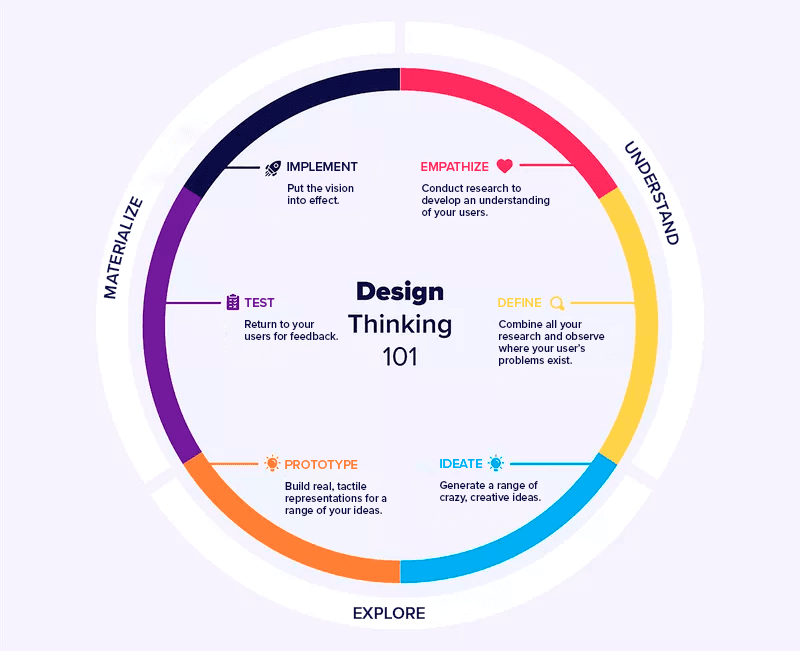Design thinking is a transformative process that is being embraced in a variety of industries to address complex problems with innovative solutions. It’s a human-centered approach that starts with understanding the needs and experiences of people and ends with unique solutions tailored to meet those needs. Here’s a simple guide to understanding and implementing design thinking in your projects.
Understanding Design Thinking
At its core, design thinking is about empathy. It involves putting yourself in the shoes of your users and looking at the problem from their perspective. This approach is not limited to designers; it’s a mindset that can benefit anyone who is involved in creating a product, service, or experience.
The Five Stages of Design Thinking
The design thinking process can be broken down into five stages:
- Empathize: This is about understanding the needs, thoughts, emotions, and motivations of the people you are designing for. Methods include observations, interviews, and experiencing what your users experience.
- Define: In this stage, you’ll compile the information gathered during the empathy stage and define the core problems you have identified.
- Ideate: This is the brainstorming phase, where you’ll generate a range of ideas and solutions without limiting creativity.
- Prototype: Here, you’ll start to create tangible representations of your ideas. These prototypes are meant to be shared and tested within your team and, eventually, with users.
- Test: Testing is all about learning what works and what doesn’t. You’ll use feedback from users to refine your prototypes and solutions.
Applying Design Thinking
To apply design thinking effectively, you need to be willing to embrace ambiguity and be ready to iterate on your ideas. It’s a non-linear process that often involves going back and forth between the different stages as you learn and discover more about the user and the problem.
Benefits of Design Thinking
Design thinking can lead to more innovative products and services, improved user experiences, and can even transform organizational culture. It encourages teams to focus on the people they’re creating for, which leads to better products, services, and internal processes.
Conclusion
Design thinking is a powerful tool for innovation and problem-solving. It’s not just about aesthetics; it’s about combining empathy, creativity, and rationality to meet user needs and drive business success. Whether you’re a designer, manager, engineer, or educator, design thinking can help you approach problems in new ways and find solutions that truly resonate with users.
For those interested in diving deeper into design thinking, there are numerous resources available, including comprehensive guides from Adobe and CareerFoundry, as well as academic insights from institutions like MIT Sloan. Each offers a unique perspective on how to integrate design thinking into your workflow for better outcomes.


Leave a Reply